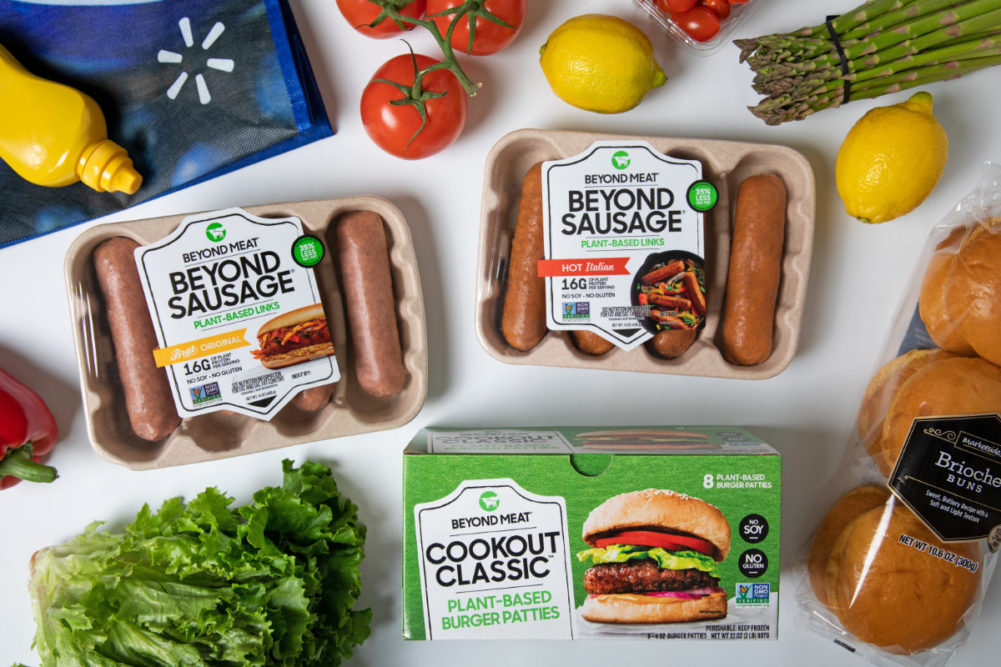EL SEGUNDO, CALIF. – The Delta variant of COVID-19 combined with numerous operational and supply chain issues impacted Beyond Meat Inc.’s performance during the third quarter of fiscal 2021, according to the company. Beyond Meat’s stock price fell to $80.55 per share, nearly 15%, at the beginning of trading on Nov. 11 when compared to the previous day’s closing price.
“The headline for the third quarter relative to our expectations at the onset of 2021 is that it was a difficult operating environment,” said Ethan Brown, president and chief executive officer, during a Nov. 10 conference call with securities analysts. “Highly variable demand, reflecting the Q2 retreat and then Q3 reemergence of COVID in the form of the Delta variant, sustained labor shortages impacting certain customers as well as our own facilities and other high-impact supply chain disruptions are among the challenges characterized in the quarter.”
For the quarter ended Oct. 2, Beyond Meat sustained a loss of $54.8 million, more pronounced than the third quarter of fiscal 2020 when the company reported a loss of $19.3 million.
Quarterly sales rose to $106 million from $94 million the year before but were well below the company’s guidance. On Oct. 25 Beyond Meat had reduced its quarterly sales guidance from a range of $120 million to $140 million to approximately $106 million.
In the United States, the company’s largest market, retail sales fell 16% to $52.4 million and foodservice sales fell 7% to $15.1 million. A bright spot during the quarter were international sales, which rose from $16 million during the third quarter of fiscal 2020 to $39 million during the most recent quarter.
Brown cited several reasons for the slide in US retail sales, including fewer shopping trips by consumers, an unwillingness of consumers to try new products, less consumer interest in healthy options, fewer instore sampling events due to the Delta variant, and labor issues at retailers that impacted shelf resets and restocking.
He also cited the Delta variant as dampening foodservice activity and said labor shortages at outlets drove reduced operating hours and menu rationalization.
“In short, as we planned 2021, we held cautious expectations (that) by the second half of the year we’d have our footing back in foodservice and, specifically, be more active with many of our QSRs, (but) we saw further delays. Unlike 2020, when foodservice challenges led to a marked increase in retail activity, as foodservice demand reduced, we did not see a corresponding increase in activity in retail, at either the brand or category level during the third quarter.”
Additional challenges during the quarter included severe weather in Pennsylvania that interrupted water availability at its manufacturing plant and the destruction of packaging inventory at a nearby storage center.
“Though we were able to reallocate certain materials from other locations, the loss of packaging materials at our storage facility had a sustained impact on our ability to fill orders as we awaited replenishment of damaged inventory,” Brown said.
Beyond Meat is guiding that fourth-quarter sales will be between $85 million and $110 million. Sales during the fourth quarter of fiscal 2020 were $102 million.
Philip E. Hardin, chief financial officer and treasurer, said the company expects moderation in year-over-year growth, because there are five fewer shipping days compared to the fourth quarter of 2020. He added that the Beyond Meat is expected to be fully recovered from the operational issues it suffered during the third quarter, but there may be some “knock-on effects.”
“Overall, we continue to operate in a challenging and variable macro environment affected in part by ongoing uncertainty related to COVID-19, labor issues at both retail and foodservice customers, significantly increased transportation costs, raw ingredients and packaging inflation and global supply chain challenges, which have had a minimal impact on our business thus far, but could represent potential headwinds nonetheless,” Hardin said. “Combined with the dynamic nature of our category, which remains nascent, this backdrop adds significant variability to our realized end customer demand, thereby increasing forecast and complexity.
“As such, although our outlook does not assume a significant deterioration in the operating environment as it stands today, it does reflect some conservatism, which we believe is appropriate given the challenges I just highlighted.”


